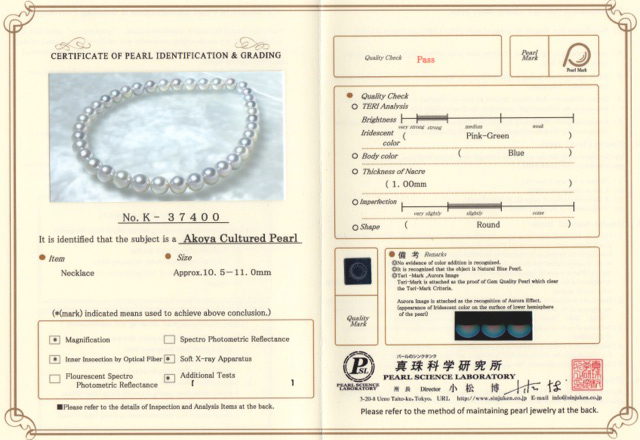Pearls will never be out of fashion…
What is a Cultured Pearl?
Natural pearls are extremely hard to find in the nature and it is obvious that most of the pearls sold and used in jewelry today are cultured.
To give birth to a cultured pearl, a tiny bead is put into the oyster and with time the oyster covers the bead in many layers of natural minerals and proteins. This substance is called nacre (Nay-Ker). Nacre gives pearls their silky luster and fascinating color.
Choosing
Hyrv offers You a variety of highest quality Japanese Akoya, South Sea and Tahitian pearls. We are glad to assist you in choosing the right pearls for you.
For example, our Cocochnik collection is embellished with Japanese Akoya pearls.
Quality
Pearls are natural product and slight imperfections are quite acceptable and moreover give certain charm. Unacceptable defects include surface cracks, holes, thin and flaking nacre.
For rare pearls we provide the laboratory verified certificate.

Color
Normal pearl colors are white, cream, gold, pink, silver, and black. A pearl can have a hint of secondary color, or overtone, which is seen when light reflects off the pearl surface. For example, a pearl strand may appear white, but when examined more closely, a pink overtone may become apparent.


Luster
Pearls produce an intense shine called luster. This effect is created when light reflects off the nacre. Choosing a pearl, remember that the larger the pearl, the more layers it has, the more luster it produces. Compare a 5mm Freshwater cultured pearl with a 10mm South Sea cultured pearl and the difference is obvious. The difference in luster is as clearly visible as the difference in the pearl sizes.
Shape
We offer the highest quality, rarest pearl shape – round. The term ’round’ does not mean spherical like a marble but the pearls should not be obviously oval or flattened to the unaided eye.

Surface Markings
The layers of nacre covered by oyster do not always appear smooth. Spots and bubbles are normal during the layering process. Pearls with the smoothest surfaces are of the highest quality. We offer pearls with a range of surface qualities.
Size
The size of the pearl depends on the type of pearl. Akoya pearls range from about 2.5-12.5 mm, and South Sea and Tahitian pearls can reach sizes as large as15-16 mm.

Care
Receiving a proper care pearls can last a lifetime. The best way to care of pearls is to wear them as the body’s natural oils keep pearls alive. It’s important to keep them away from household chemicals including perfume, makeup and hairsprays. All kinds of chemicals can dull the luster of your pearls. It is recommended that you put your pearls on last when getting ready and make them the first thing you take off when you come home. Before putting your pearls away, wipe them with a soft cloth and store them separate from other jewelry to avoid scratching their fragile surfaces.

